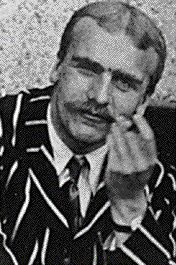
Haldanes Law:Now my own suspicion is that the Universe is not only queerer than we suppose, but queerer than we CAN suppose.
Today is another science day on Le Revue Gauche. Checking out and posting stories yesterday about science and the natural world I came across J.B.S. Haldane, a marxist scientist and evolutionary theorist. So today became not just science day at Le Revue Gauche but 'Left wing' science day.